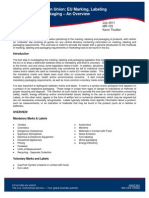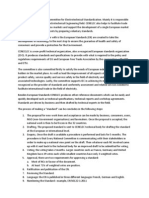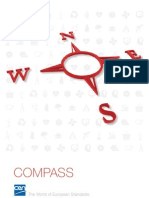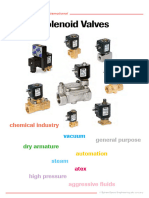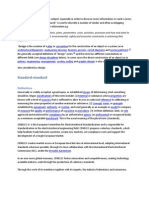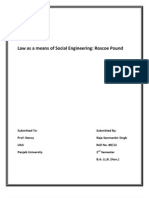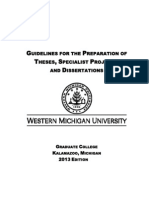Mandatory Requirements For Wood Processing in The Fields of Certification, Labelling, Marking and Standardisation
Mandatory Requirements For Wood Processing in The Fields of Certification, Labelling, Marking and Standardisation
Uploaded by
Dženana Delić - AgićCopyright:
Available Formats
Mandatory Requirements For Wood Processing in The Fields of Certification, Labelling, Marking and Standardisation
Mandatory Requirements For Wood Processing in The Fields of Certification, Labelling, Marking and Standardisation
Uploaded by
Dženana Delić - AgićOriginal Title
Copyright
Available Formats
Share this document
Did you find this document useful?
Is this content inappropriate?
Copyright:
Available Formats
Mandatory Requirements For Wood Processing in The Fields of Certification, Labelling, Marking and Standardisation
Mandatory Requirements For Wood Processing in The Fields of Certification, Labelling, Marking and Standardisation
Uploaded by
Dženana Delić - AgićCopyright:
Available Formats
15
th
International Research/Expert Conference
Trends in the Development of Machinery and Associated Technology
TMT 2011, Prague, Czech Republic, 12-18 September 2011
MANDATORY REQUIREMENTS FOR WOOD PROCESSING IN THE
FIELDS OF CERTIFICATION, LABELLING, MARKING AND
STANDARDISATION
Ismar Alagi, Ph.D., Assistant Professor
Municipality of Teanj/University of Zenica, Faculty of Mechanical Engineering,
Teanj/Zenica,
Bosnia and Herzegovina
ABSTRACT
Most countries in the European Union have their own institute or centre for the Wood & Wood
Products Industry. Most of these were originally supported and often founded by government or
regional states and have over time developed their own test facilities. A number of Centres now
offer their own Quality Marks for national and international recognition. Certification, product and
material testing, accreditation and quality criteria are a feature of trading within the EU and the
EEA. They can be mandatory, as from the EC, or opportunistic, as from trade and business intent on
meeting perceived consumer demands. Both routes result in commercial success.
Standardisation or standardization, in the context related to technologies and industries, is the
process of establishing a technical standard among competing entities in a market, where this will
bring benefits without hurting competition. In the context of business information exchanges,
standardization refers to the process of developing data exchange standards for specific business
processes using specific syntaxes. These standards are usually developed in voluntary consensus
standards bodies such as the United Nations Center for Trade Facilitation and Electronic Business
(UN/CEFACT), the World Wide Web Consortium W3C, and the Organization for the Advancement of
Structured Information Standards (OASIS).
This article presents short information about role of certification, labelling, marking and
standardisation for wood processing in EU countries and importance of this issue for wood
processing industry in B&H with regard to EU market access requirements.
Key words: wood processing, certification, labelling, marking, standardisation.
1. INTRODUCTION
Certification, product and material testing, accreditation and quality criteria are a feature of trading
within the EU and the EEA. They can be mandatory, as from the EC, or opportunistic, as from trade
and business intent on meeting perceived consumer demands. Both routes result in commercial
success. Most countries in the European Union have their own institute or centre for the Wood &
Wood Products Industry. A number of international test centres now offer their own Quality Marks
for national and international recognition. Much work and activity is now driven by the need for
conformity within the EU and the EEA (European Economic Area) as well as international (ISO)
moves over the last 30 years. This conformity could have been seen as a Trade Barrier, but the wide
scope and availability of methods and facilities able to carry out tests to meet the standards has
ensured this need not be the case [1]. .
It is however vital that developing and emerging countries become fully aware of these conformity
needs for wood and wood products and are able to respond to the requisite standards that apply in
each country. This article presents short information about role of certification, labelling, marking and
standardisation for wood processing in EU countries and importance of this issue for wood
processing industry in B&H with regard to EU market access requirements [2]. .
2. EU MARKET ACCESS REQUIREMENTS AND DIRECTIVES
In essence 2 prime directives (Construction Products Directive-CPD and General Product Safety
Directive-GPS) have been issued by the European Commission for activation across all 27 EU
countries. These apply to wood & wood products as with any other goods and products within their
confines. It is worth understanding the comprehensive nature of these directives. The aim of the
Construction Products Directive (CPD) is to abolish the great number of technical barriers to trade
that currently exist between the highly regulated construction markets across the EU Member States
in order to create a single European market for construction products. The CPD Directive is for
construction and GPS Directive is for consumer goods. The CE Mark, shown within the first directive
is also used for Nursery Furniture [3]. .
The manufacturers must put on the market products that comply with the general safety requirement.
In addition, they must provide consumers with the necessary information in order to assess a product's
inherent threat, particularly when this is not directly obvious, and take the necessary measures to
avoid such threats (e.g. withdraw products from the market, inform consumers, recall products which
have already been supplied to consumers, etc.). Distributors are also obliged to supply products
which comply with the general safety requirement, to monitor the safety of products on the market
and to provide the necessary documents ensuring that the products can be traced.
If the manufacturers or the distributors discover that a product is dangerous, they must notify the
competent authorities and, if necessary, cooperate with them.
3. CE MARKING
The Directive prescribes that construction products put on the market shall be of such nature that they
enable the construction in which they are incorporated to comply with the following six essential
requirements:Mechanical Resistance and Stability; Safety in Case of Fire; Hygiene, Health and the
Environment; Safety in Use; Protection against Noise and; Energy Economy and Heat Retention [4].
Compliance with these requirements will have to be demonstrated by means of the CE-mark. This CE
marking will show that the product complies with all the legal requirements and will, in principle,
allow the product to be placed on the entire EU 27 country construction market, as well as in Iceland,
Liechtenstein, Norway, Switzerland and progressively into the next set of accession countries. The
EU Member States will not be allowed to require any other marks by law. On the other hand, the
manufacturer will still have the possibility to put additional quality marks on his product, provided
these do not hamper the legibility of the CE marking and do not confuse the user. The exact
requirements for the CE marking are defined in so-called harmonised standards, adopted by CEN,
on mandates given by the European Commission after consultation of the Standing Committee on
Construction, a body of representatives of the EU Member States that is responsible for the
implementation of the CPD. Wood and wood-based products are covered by the following mandates:
M 101 Doors, windows and related products
M 108 Curtain walling systems
M 112 Structural timber products and ancillaries
M 113 Wood-based panels
M 119 Flooring
These mandates determine which (parts of) the standards developed in the CEN technical committee will
become mandatory under the CPD. Once a reference to a harmonized standard is published in the
official journal, manufacturers can start putting CE-marked products on the market. So far, only one
harmonized standard, EN 13986 on wood-based panels has been officially approved and the reference
published. It implies that, as from 1 April 2004, only CE-marked particleboard, MDF, OSB, plywood,
fibreboards will be allowed on the EU market for construction purposes. Non CE-marked products
can still be sold, but then only for other purposes (non-constructional applications such as e.g.
furniture) [5].
4. IMPORTANT TEST MARKS
There are a lot of test marks for wood processing sector. This article presents several worldwide
known test marks for wood processing industry.
The LGA and its brand name stand for a modern group of companies providing testing and other
services.The Geprfte Sicherheit ("Tested Safety") or GS mark is a voluntary certification mark for
technical equipment. It indicates that the equipment meets German and, if available, European safety
requirements for such devices. The main difference between GS and CE mark is that the compliance
with the European safety requirements has been tested and inspected by a state-approved (but
independent) body. The mark is based on the German Equipment and Product Safety Act ("Gerte-
und Produktsicherheitsgesetz", or "GPSG") [6].
The Golden M is a indicator of German Furniture Quality Association (DGM). Furniture with this
RAL seal of approval is subject to stringent limit values for pollutants. Technical tests in order to
receive the certification mark Golden M includes: Durability tests; Material quality tests; Long life
cycle tests; Safety tests and; Health safety tests.
All tests are carried out by independent institutions. The Golden M is the only in Germany official
accepted mark for furniture and the most demanding mark for furniture quality- and safety in Europe.
Figure 1. Important test marks [7].
koControl is a pool of about 55 furniture traders that pay high attention to ecological aspects. Their
clients are persons that pay attention to ecological clean products and a healthy living environment.
koControl is member of the European Association for ecological building arrangements
(Einrichtungshuser) and aims to test their furniture as much as possible by independent test
institutions before giving the koControl label. Products have to be as much as possible free of
pollutants. kocontrol, Gessellshaft fr Qualitsstandards kologischer Einrichtungshuser mbH,
Germany (Ecolabel, Germany) included are: Furniture made of massive wood; Furniture containing
padding and; Mattresses.
The Giscode label is voluntary and spread mostly within the construction trade and related fields.
Emissions controlled products regarding very Volatile Organic Compounds must be made without
any additions of solvents. In Germany they are labelled with the appropriate GISCODE, as far as they
fall within the area of application of this labeling system.
The most well-known and wide spread ISO type I label in Germany is the Blue Angel which is
available for different kinds of consumer and professional goods and services. The German
Environmental Label Blue Angel is for emission-minimised products made of wood and wooden
materials. This Environmental Label combines health and ecological criteria. For example, it lays
down limit values for the release of pollutants like solvents, formaldehyde and plasticisers. The
German Federal Environmental Agency has awarded the Blue Angel to a series of living-room,
bedroom and office furniture which is produced in eco-friendly processes, does not constitute a health
hazard, and whose wood comes predominantly from sustainable forestry operations.
5. RESEARCH FINDINGS
In 2009, the Author conducted a special survey of wood processing companies in Bosnia and
Herzegovina. A database of companies from wood processing and furniture industry developed by the
Consultant was used in constructing the sample. Based on criteria for evaluation of companies for
certification, labelling, marking and standardization, the sample included a higher percentage of
companies involved in final wood processing. The selection of this sample of 27 companies was
neither stratified nor random.
Some BiH companies have been certified by recognized agencies according requirements of ISO 9001
standard. Only 22,2 % are preparing or have completed preparation for QMS certification, and 55,6%
are not pursuing QMS certification. Quality control is a never-ending process, which must always be
improved on. There is no official EU quality standard for domestic furniture. However, the CEN, the
European Committee for Standardization, published through its technical committee the CEN/TC 207.
This includes some voluntary quality standards and test methods still apply in many cases. Therefore,
a large majority of surveyed companies were interested in satisfying QMS according requirement of
following standards: ISO 9001, ISO 14001, CE mark (for Construction Joinery and Wooden Toys)
and Test certificates for specific products. The percentage of companies with quality certification is
higher among companies with over 100 employees than among companies with a small number of
employees.
6. CONCLUSION
A brief overview of the European market access requirements and directives for wood processing
industry was given in this article. Current situation in BH wood processing sector shows high
potencial for introduction of market access requirements within BH wood value chain in future [8].
7. REFERENCES
[1] Alagi I.: Market Survey and Identification of high impact ICTs in BH Wood processing Industry, 14
th
International Research/Export Conference Trends in the Development of Machinery and Associated
Technology, University of Zenica, UPC Barcelona, Baheehir niversitesi Istanbul, TMT 2010,
Mediterranean Cruise, 11-18. September 2010.
[2] Alagi I.: Final report on the results of GAP Analysis of the wood processing sector in Bosnia and
Herzegovina, Swiss Import Promotion Programe, SIPPO, Zurich, Switzerland, January 2009.
[3] Alagi I.: Final report on the results of Evaluation of market and production potential in the wood processing
sector in BiH and Evaluation of BiH companies for participationin SIPPO match making activities 2009-2011,
Swiss Import Promotion Programe, SIPPO, Zurich, Switzerland, July 2008.
[4] Alagi I., Korjeni I., Identification of High Impact ICTs as e-BIZ Center Core Offerings: Wood Sector,
Briefing Paper, Excellence in Innovation Project, USAID/BiH Excellence in Innovation dot-ORG Cooperative
Agreement Award No. 168-A-00-07-00101-00 and Royal Ministry of Foreign Affairs, Norway Grant Project
number 2070065, Boston, USA, June 6, 2008.
[5] Alagi I., Petkovi D., Stautmeister T., Wuthrich K., Some word about Wood Excellence Center as top-
priority project of Central BiH, 11
th
International Research/Export Conference Trends in the Development of
Machinery and Associated Technology, University of Zenica, UPC Barcelona, Baheehir niversitesi
Istanbul, TMT 2007, Hammamet, Tunisia, 05-09. September 2007.
[6] Alagi I., Certification, Labelling, Marking and Standardization-Wood Excellence Center, Manual,
University of Applied Sciences Berne, School of Architecture, Civil and Wood Engineering HSB, Biel,
Switzerland, 2007.
[7] Prof.Dr-Ing. T. Stautmeister, M.Bieri: Prozessreorganisation am Beispiel der automatisierten
Fenstermontage und verlebung, Internationale Konferenz zur Automation in der Holzwirtschaft,
Proceeding, pages 1-9, Berner Fachhochschule, Hochschule fr Arhitektur, Bau and Holz HSB, Burgdorf, Biel,
Switzerland, 12.und 13.October 2006.
[8] Alagi I., Analysis of the existing production technologies level in wood processing industry and
specification of needs, USAID CCA, REZ Agency, Zenica, Bosnia and Herzegovina, 2006.
You might also like
- BS en 1090 Certification ProcessDocument5 pagesBS en 1090 Certification ProcessALOKE GANGULYNo ratings yet
- Ped Training 2019Document131 pagesPed Training 2019bmanojkumar16100% (1)
- European Union: EU Marking, Labeling and Packaging - An OverviewDocument20 pagesEuropean Union: EU Marking, Labeling and Packaging - An OverviewAriza RiswandaNo ratings yet
- D5 5 HandbookDocument38 pagesD5 5 HandbooklcandoNo ratings yet
- CEMarking PDFDocument9 pagesCEMarking PDFniteen123No ratings yet
- Budget of Work Tle Aa 1 Quarter Sy 2016-2017Document6 pagesBudget of Work Tle Aa 1 Quarter Sy 2016-2017Jeff Erni80% (10)
- Field Guide To Human-Centered Design - IDEOorg - EnglishDocument192 pagesField Guide To Human-Centered Design - IDEOorg - EnglishPedro Muñoz del RioNo ratings yet
- Maine Exporter's Guide To The European Union's: CE Marking RequirementsDocument35 pagesMaine Exporter's Guide To The European Union's: CE Marking Requirementssopuser100% (1)
- B1 Eurocodes Implementation & UseDocument12 pagesB1 Eurocodes Implementation & UsetyukgombaNo ratings yet
- 6 Steps To CE Marking in EuropeDocument16 pages6 Steps To CE Marking in EuropeEU Chamber Of Commerce in Canada-West100% (1)
- European Product Safety Directives & CE Marking: A Guide For Manufacturers and ImportersDocument6 pagesEuropean Product Safety Directives & CE Marking: A Guide For Manufacturers and ImporterszaheerNo ratings yet
- Handbook Standardisation enDocument24 pagesHandbook Standardisation enmohamednavaviNo ratings yet
- CE Markings - SummaryDocument2 pagesCE Markings - SummaryALOKE GANGULYNo ratings yet
- CE Markings GuideDocument8 pagesCE Markings GuideALOKE GANGULYNo ratings yet
- CE Marking Guidance by UK GovtDocument9 pagesCE Marking Guidance by UK GovtMuhammad AtifNo ratings yet
- En CPR Guidance For Aluminium Doors Windows and Curtain Walls 2018Document22 pagesEn CPR Guidance For Aluminium Doors Windows and Curtain Walls 2018Mehul VoraNo ratings yet
- En StandardsDocument1 pageEn StandardsSANKPLYNo ratings yet
- Safety Footwear Ce MarkingDocument8 pagesSafety Footwear Ce Markingmarius_brkt6284No ratings yet
- What Is PEDDocument3 pagesWhat Is PEDvatbeyNo ratings yet
- CE Marking GuideDocument12 pagesCE Marking GuideGanesh NagarajNo ratings yet
- Formal Requirements For CE-marked ProductsDocument2 pagesFormal Requirements For CE-marked ProductsEric GrdNo ratings yet
- CE Marking Fact Sheet 12.17Document2 pagesCE Marking Fact Sheet 12.17Manohar T MNo ratings yet
- A Global View On Standardization in Ultrasonic TestingDocument13 pagesA Global View On Standardization in Ultrasonic TestingLuong Ho VuNo ratings yet
- CE Mark - Brochure - enDocument7 pagesCE Mark - Brochure - enymagNo ratings yet
- Building and Structural Design CodesDocument134 pagesBuilding and Structural Design Codesdominikwil100% (4)
- Guidline For Medical Products To Be CE MarkedDocument10 pagesGuidline For Medical Products To Be CE MarkedMuhammad AtifNo ratings yet
- ETA FAQs ENDocument12 pagesETA FAQs ENCK AhnNo ratings yet
- NIST Special Publication 951 A Guide To EU Standards and Conformity AssessmentDocument36 pagesNIST Special Publication 951 A Guide To EU Standards and Conformity Assessmentrehan107No ratings yet
- PED and CE MarkingDocument4 pagesPED and CE Markingdhanu_aquaNo ratings yet
- CE Marking Construction ProductsDocument2 pagesCE Marking Construction ProductsteedNo ratings yet
- CENCELECDocument1 pageCENCELECTazz TazNo ratings yet
- Ce Marking ProcessDocument3 pagesCe Marking ProcesszsmithNo ratings yet
- CE Marking For Windows and DoorsDocument7 pagesCE Marking For Windows and DoorsymagNo ratings yet
- Com 2017 712 - enDocument14 pagesCom 2017 712 - enVartika PrasadNo ratings yet
- CE Mark - FinalDocument21 pagesCE Mark - Finalaboshok100% (1)
- Compass: The World of European StandardsDocument12 pagesCompass: The World of European StandardsCristiancar20No ratings yet
- CE MarkingDocument13 pagesCE MarkingDhinakaran RajarathinamNo ratings yet
- CE Mark InterducatonDocument16 pagesCE Mark InterducatonMedhat Saad EldinNo ratings yet
- GD 2024 005 Recommendation For Vote On FprEN 18031 SeriesDocument2 pagesGD 2024 005 Recommendation For Vote On FprEN 18031 SeriesshaylynnNo ratings yet
- CEAlertBrochure3 Latest Eg Main 017276Document6 pagesCEAlertBrochure3 Latest Eg Main 017276MarcTimNo ratings yet
- Solenoid_Valves_catalogue-2015 (MERDOUD Fatah)Document56 pagesSolenoid_Valves_catalogue-2015 (MERDOUD Fatah)elarabiengins2008No ratings yet
- 10 Frequently Asked Questions About The Machinery DirectiveDocument5 pages10 Frequently Asked Questions About The Machinery Directivesujal_aminNo ratings yet
- GLW015 - MACHINERY - Countries List - 2017 Rev0Document10 pagesGLW015 - MACHINERY - Countries List - 2017 Rev0dfbcertNo ratings yet
- Pressure Equipment CBI - EU - CE - PEDDocument12 pagesPressure Equipment CBI - EU - CE - PEDShafqatiqbal100% (1)
- Conformity Assessment in Eu Technical Harmonisation LegislationDocument50 pagesConformity Assessment in Eu Technical Harmonisation LegislationjosepcomaNo ratings yet
- Ce Marking DirectivesDocument3 pagesCe Marking DirectivesALOKE GANGULYNo ratings yet
- Customer Information RED Incl FAQ 12062017Document8 pagesCustomer Information RED Incl FAQ 12062017Ego-free New-earthNo ratings yet
- Handling Guidance Fem CPRDocument6 pagesHandling Guidance Fem CPRbollascribdNo ratings yet
- Lecture 1A-4Document43 pagesLecture 1A-4Hari RamNo ratings yet
- Presentation From CPR To The CPDDocument19 pagesPresentation From CPR To The CPDNikolay DimovNo ratings yet
- Overview of European Trade Mark LawDocument4 pagesOverview of European Trade Mark Lawmaihuonghn2807No ratings yet
- ICF BlocksDocument24 pagesICF BlocksjesusNo ratings yet
- What Are The Directives That Allow For CE MarkingDocument3 pagesWhat Are The Directives That Allow For CE MarkingALOKE GANGULYNo ratings yet
- What Needs To Be in A Technical FileDocument2 pagesWhat Needs To Be in A Technical FileAisha MughalNo ratings yet
- EN 13395-1-2002 - enDocument10 pagesEN 13395-1-2002 - enoptbestoreNo ratings yet
- CE Marking: Apply To Your Specific Product)Document4 pagesCE Marking: Apply To Your Specific Product)Oguz ErkulNo ratings yet
- Best Practices P&IDDocument42 pagesBest Practices P&IDamarnetha100% (2)
- Research IntroDocument5 pagesResearch Introshubhidixit24No ratings yet
- Eurocode 5 Guidance NotesDocument36 pagesEurocode 5 Guidance NotesAlex Zecevic0% (1)
- Ce Marking WebinarDocument44 pagesCe Marking WebinarMishaCveleNo ratings yet
- Challenges and Approaches for Selecting, Assessing and Qualifying Commercial Industrial Digital Instrumentation and Control Equipment for Use in Nuclear Power Plant ApplicationsFrom EverandChallenges and Approaches for Selecting, Assessing and Qualifying Commercial Industrial Digital Instrumentation and Control Equipment for Use in Nuclear Power Plant ApplicationsNo ratings yet
- 2 DrskaDocument1 page2 DrskaDženana Delić - AgićNo ratings yet
- 1 Postolje PDFDocument1 page1 Postolje PDFDženana Delić - AgićNo ratings yet
- Area Roughing For ImpellersDocument3 pagesArea Roughing For ImpellersDženana Delić - AgićNo ratings yet
- 1 Postolje PDFDocument1 page1 Postolje PDFDženana Delić - AgićNo ratings yet
- RIBA Plan of Work 2013 - PresentationDocument68 pagesRIBA Plan of Work 2013 - Presentationelchuno100% (3)
- DN NoteDocument37 pagesDN NoteHan HanNo ratings yet
- WiderWorld 1 LanguageTestU7 GroupBDocument3 pagesWiderWorld 1 LanguageTestU7 GroupBМарія БорухNo ratings yet
- Cramer's Rule - Wikipedia, The Free EncyclopediaDocument17 pagesCramer's Rule - Wikipedia, The Free EncyclopediabmxengineeringNo ratings yet
- Law As A Means of Social Engineering - Roscoe PoundDocument15 pagesLaw As A Means of Social Engineering - Roscoe PoundRaja Sanmanbir Singh100% (1)
- Tib BW Process Design GuideDocument306 pagesTib BW Process Design Guideapi-3820704100% (2)
- Seizure After StrokeDocument6 pagesSeizure After StrokenellieauthorNo ratings yet
- The Igbo-UkwuDocument10 pagesThe Igbo-UkwuMateus Raynner André100% (1)
- Autocad Model Space and Paper Space Layout ViewDocument9 pagesAutocad Model Space and Paper Space Layout ViewIsmet MehmetiNo ratings yet
- Whatsapp Task 1 - Psycholinguistics OverviewDocument4 pagesWhatsapp Task 1 - Psycholinguistics OverviewrabiaNo ratings yet
- Design LabDocument76 pagesDesign LabRajath AcharyaNo ratings yet
- S.y.b.sc Cbcs Time Table 2024-2025Document1 pageS.y.b.sc Cbcs Time Table 2024-2025prakash.chikte7No ratings yet
- Context CluesDocument0 pagesContext Clueswakdoj6345No ratings yet
- Stragic ManagementDocument31 pagesStragic ManagementDuke_007No ratings yet
- II © 2018 The Critical Thinking Co.: 05233PBP Building Thinking Skills Beg 1.indb 2 8/1/2018 1:41:41 PMDocument7 pagesII © 2018 The Critical Thinking Co.: 05233PBP Building Thinking Skills Beg 1.indb 2 8/1/2018 1:41:41 PMdiy studentNo ratings yet
- PCLQDocument73 pagesPCLQRidhayatiNo ratings yet
- NetAct Monitor and Fault Management ReportingDocument79 pagesNetAct Monitor and Fault Management ReportingJerry SAAGOUON PONKAMNo ratings yet
- DLD Lab ManualDocument51 pagesDLD Lab Manualkamran khanNo ratings yet
- 1.2 Theoretical ProbabilityDocument26 pages1.2 Theoretical ProbabilityGaganpreet KaurNo ratings yet
- 2 SHS Challenge - Managing Exits and Outcomes That Achieve Results - Dr. Dina S. Ocampo - CompressedDocument38 pages2 SHS Challenge - Managing Exits and Outcomes That Achieve Results - Dr. Dina S. Ocampo - CompressedJoviner Yabres LactamNo ratings yet
- Siemens S7 300Document8 pagesSiemens S7 300mastorres87No ratings yet
- Mirror HistoryDocument19 pagesMirror Historytanitart100% (1)
- 2013 GuidelinesDocument35 pages2013 GuidelinesYahia Raad Al-AniNo ratings yet
- Chapter 04 Absorption and Stripping of Dilute MixturesDocument31 pagesChapter 04 Absorption and Stripping of Dilute MixturesJonny Yana CruzNo ratings yet
- Sofolympiadtrainer: Force and MatterDocument3 pagesSofolympiadtrainer: Force and MatterRajalaxmiNo ratings yet
- PSQL BtrieveAPI GuideDocument210 pagesPSQL BtrieveAPI Guidelenin jivNo ratings yet
- Conservation and Management of Mangroves in OrissaDocument34 pagesConservation and Management of Mangroves in OrissaJitendra Prasad SinghNo ratings yet
- Design and Production of An Arch Built of Precast Stackable Co 2019 StructurDocument7 pagesDesign and Production of An Arch Built of Precast Stackable Co 2019 StructurSteven KuaNo ratings yet


